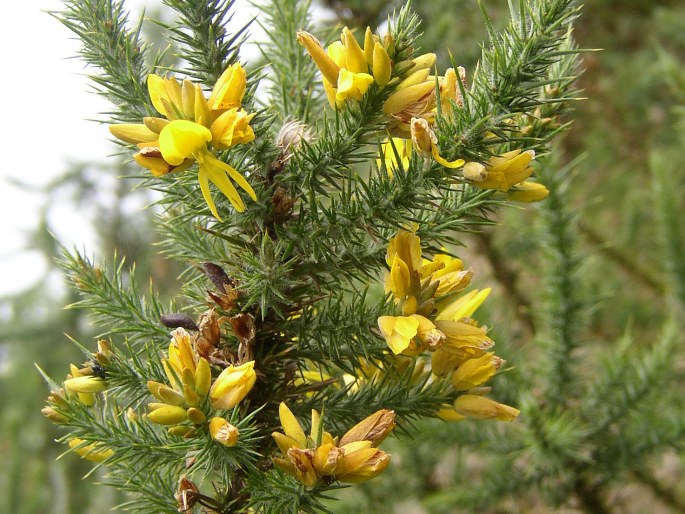Family: Fabaceae Lindl.

Distribution: Southern and Western Europe – from Portugal to Britain (to Italy on the East), also cultivated and naturalized in Northern and Southern Africa, Macaronesia, temperate and tropical Asia (China, Indonesia, Sri Lanka), Australia, New Zealand, United States (including Hawaii), Central America, Southern America (Ecuador, Argentina, Uruguay).
Ecology: It grows on dry and rocky habitats, in forest glades, around roads.
Description: An evergreen spiny shrub, 1–2 m high, richly branched, the young stems are green, with the leaves modified into green spines, 1–3 cm long. The flowers are yellow, 1–2 cm long, flowers most strongly in spring (from January to July), though it bears some flowers year round. The fruit is a legume, 2 cm long.
Note: The Common Gorse was introduced as an ornamental plant or hedge in many areas of the world, now belongs to invasive weeds (e. g. New Zealand etc.). The species displaces indigenous plants, it is regarded as one of the 100 most destructive invasive species (based on IUCN).



These images were taken in Portugal, Madeira, Paúl da Serra (June 29, 2005).


